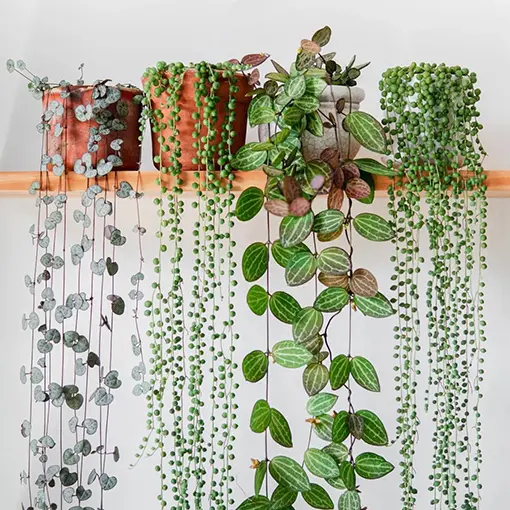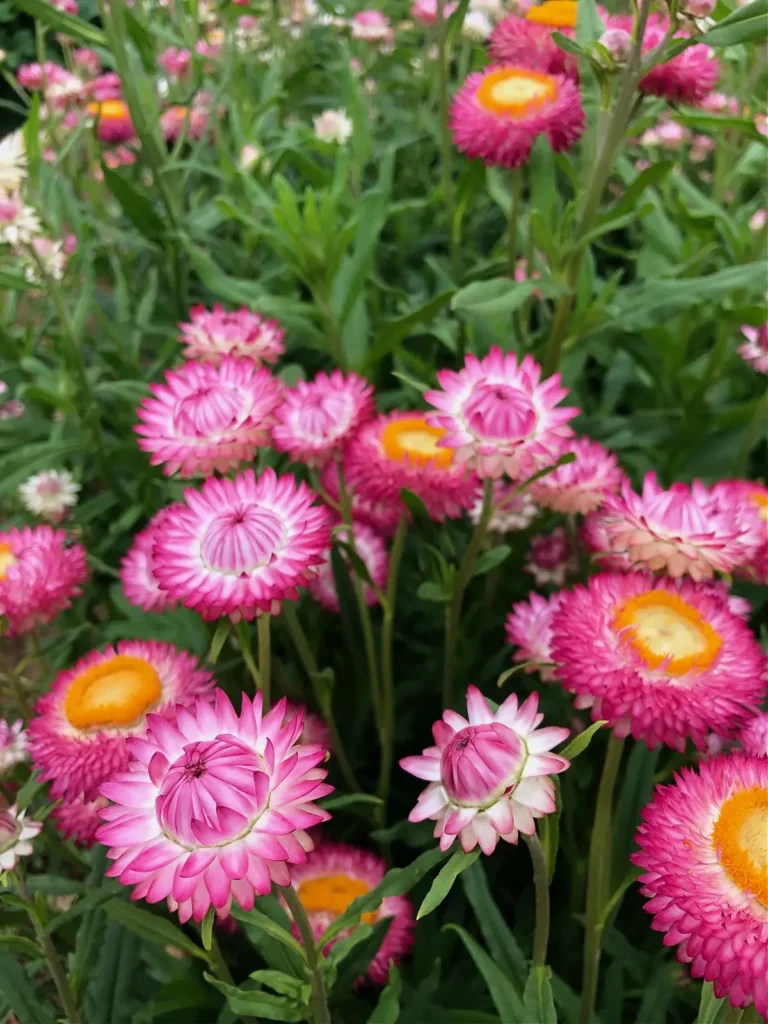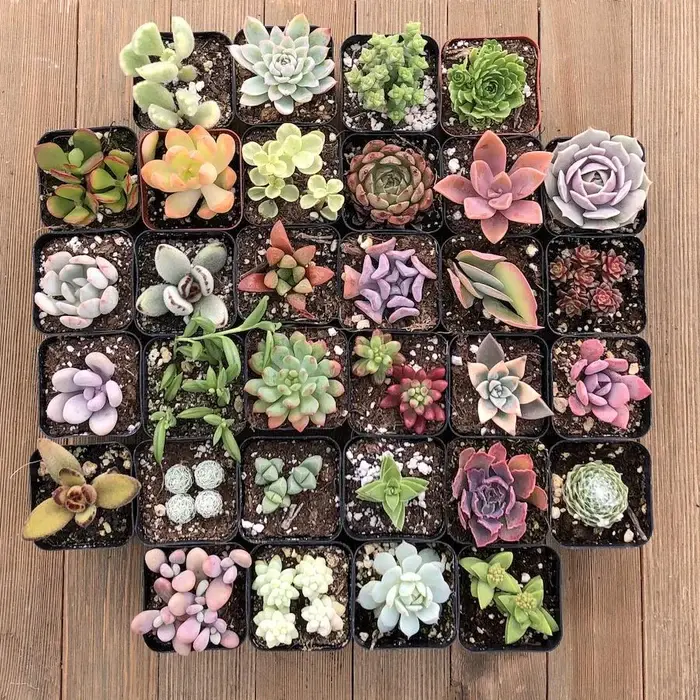Hanging Plants: The Ultimate Guide to Bringing Greenery Indoors
Hanging plants offer a unique and beautiful way to introduce nature into your living spaces, transforming dull corners into vibrant focal points. Beyond their aesthetic appeal, these versatile botanical accents can improve air quality, boost mood, and even reduce stress. Whether you’re a seasoned plant parent or just starting your green journey, understanding the nuances of selecting, caring for, and displaying hanging plants is key to their success. This comprehensive guide will equip you with the knowledge to create a thriving aerial garden.
Why Choose Hanging Plants?
Hanging plants provide a multitude of benefits, making them an excellent addition to any home or office:
- Space-Saving Solutions: Ideal for small apartments or rooms with limited floor space, hanging plants utilize vertical space, allowing you to maximize greenery without clutter.
- Enhanced Aesthetics: They add an architectural element, drawing the eye upwards and creating a sense of depth and dimension. Cascading foliage and vibrant blooms can instantly elevate a room’s decor.
- Improved Air Quality: Like all plants, hanging varieties filter toxins from the air, such as formaldehyde and benzene, contributing to a healthier indoor environment.
- Mood Boosters: Studies have shown that indoor plants can reduce stress, improve focus, and generally enhance well-being. The calming presence of greenery can transform a sterile environment into a serene oasis.
- Versatility in Placement: From sunny windows to shady corners, various hanging plants thrive in different light conditions, making them adaptable to almost any room.
Selecting the Perfect Hanging Plant
Choosing the right hanging plant depends on several factors, including your living conditions, available light, and personal preferences. Here are some popular and relatively easy-to-care-for options:
For Bright, Indirect Light
These plants thrive in locations with ample light but prefer to avoid direct, harsh sunlight, which can scorch their leaves.
- Pothos ( Epipremnum aureum): One of the most forgiving and popular houseplants, Pothos comes in various cultivars with variegated leaves. It’s incredibly adaptable and can tolerate some neglect, making it perfect for beginners. Its long, trailing vines can reach impressive lengths. Learn more about Pothos care at The Spruce.
- Spider Plant ( Chlorophytum comosum): Known for its arching leaves and “spiderettes” (baby plants) that dangle from the mother plant, the Spider Plant is a classic choice. It’s resilient, easy to propagate, and excellent at purifying the air.
- Heartleaf Philodendron ( Philodendron hederaceum): With its charming heart-shaped leaves and vigorous trailing habit, the Heartleaf Philodendron is a favorite. It’s quite tolerant of varying light conditions, though it prefers bright, indirect light for optimal growth.
- Prayer Plant ( Maranta leuconeura): Distinguished by its beautifully patterned leaves that fold up at night as if in prayer, this plant adds a unique touch. It requires consistent moisture and high humidity, making it a bit more demanding but incredibly rewarding.
For Low to Medium Light
Even if your space doesn’t get abundant sunlight, there are still plenty of hanging plants that can thrive.
- ZZ Plant ( Zamioculcas zamiifolia): While not typically a “hanging” plant in the traditional sense, smaller ZZ plants can be placed in elevated planters where their upright, waxy leaves can add a sculptural element. They are incredibly drought-tolerant and forgiving of low light.
- Peace Lily ( Spathiphyllum): While often grown in pots, Peace Lilies can also be stunning in hanging baskets, especially larger varieties. They prefer consistent moisture and low to medium light, producing elegant white spathes.
- Staghorn Fern ( Platycerium): These unique epiphytic ferns can be mounted on boards and hung, creating a striking botanical display. They require high humidity and indirect light, often watered by soaking the entire mount. For more on unique fern care, check out Gardening Know How.
For Direct Sunlight (or Very Bright Light)
Some hanging plants relish direct sun exposure, making them ideal for sunny windows or outdoor patios.
- Burro’s Tail ( Sedum morganianum): A succulent with long, trailing stems covered in plump, bead-like leaves. It needs abundant direct sunlight and infrequent watering, making it perfect for bright, dry spots.
- String of Pearls ( Senecio rowleyanus): Another popular succulent, the String of Pearls features delicate, pea-shaped leaves that cascade beautifully. It requires bright light and well-draining soil, similar to other succulents.
- Boston Fern ( Nephrolepis exaltata): While they appreciate bright, indirect light, Boston Ferns can tolerate some morning sun. They are renowned for their lush, feathery fronds and excellent air-purifying qualities, but they demand high humidity.
Essential Care Tips for Thriving Hanging Plants
Once you’ve chosen your plants, consistent care is paramount. Here’s a breakdown of key aspects:
Watering
Watering frequency depends on the plant species, pot size, humidity, and light conditions. A general rule is to check the soil moisture.
- Feel the Soil: Stick your finger about an inch or two into the soil. If it feels dry, it’s likely time to water.
- Drainage is Key: Ensure your hanging basket has drainage holes to prevent waterlogging, which can lead to root rot. Use a saucer or catch basin underneath if necessary.
- Thorough Watering: Water until water starts to drain from the bottom of the pot. This ensures the entire root ball is moistened.
- Adjust for Season: Plants typically need less water in winter when growth slows down, and more in summer during active growth.
Light
Light is crucial for photosynthesis. Understand your plant’s specific light requirements.
- Observe Your Space: Pay attention to how light changes throughout the day and year in your chosen hanging spot.
- Rotate Plants: Periodically rotate your hanging plants to ensure even growth and exposure to light on all sides.
- Signs of Too Much/Little Light: Yellowing leaves or scorched spots can indicate too much sun, while leggy growth or small leaves might signal insufficient light.
Humidity
Many popular hanging plants, especially tropical varieties, prefer higher humidity levels.
- Misting: Regularly misting the leaves can help increase humidity, especially in dry indoor environments.
- Pebble Trays: Place a tray filled with pebbles and water beneath the plant (ensuring the pot isn’t sitting directly in the water) to create a localized humid microclimate.
- Humidifiers: For a collection of humidity-loving plants, a room humidifier can be a worthwhile investment.
Fertilizing
Most hanging plants benefit from occasional feeding during their active growing season (spring and summer).
- Diluted Fertilizer: Use a balanced liquid houseplant fertilizer diluted to half strength, typically every 2-4 weeks.
- Avoid Over-Fertilizing: Too much fertilizer can burn roots. Always follow the product instructions.
- Dormancy: Do not fertilize plants during their dormant period (fall and winter).
Pruning and Maintenance
Regular pruning keeps your plants healthy, encourages bushier growth, and maintains their desired shape.
- Pinching Back: Pinch off the tips of trailing vines to encourage branching and a fuller appearance.
- Remove Dead/Yellowing Leaves: This improves the plant’s appearance and channels energy to healthy growth.
- Pest Control: Regularly inspect your plants for signs of pests like spider mites or mealybugs. Address infestations promptly with insecticidal soap or neem oil. For organic pest solutions, refer to Rodale’s Organic Life.
Choosing the Right Hanger and Pot
The right pot and hanger are not just about aesthetics; they also impact your plant’s health.
- Pot Material:
- Terracotta/Clay: Porous and allows for good air circulation, but dries out faster.
- Plastic: Retains moisture longer, ideal for plants that prefer consistent dampness.
- Ceramic: Often decorative, but can be heavy and may or may not have drainage holes.
- Hanger Type:
- Macramé: Classic and bohemian, suitable for various pot sizes.
- Metal Chains/Wires: Durable and minimalist, offering strong support.
- Wooden Hangers: Add a natural, rustic touch.
- Weight Considerations: Always ensure the hook and ceiling support can safely bear the combined weight of the plant, pot, soil, and water. A wet plant can be significantly heavier than a dry one.
Creative Display Ideas
Hanging plants offer endless possibilities for creative interior design:
- Window Displays: Utilize natural light by hanging plants in front of windows. Consider plants that can handle direct sun for south-facing windows.
- Corner Accents: Transform awkward or empty corners into lush green spaces.
- Bathroom Oasis: Many humidity-loving plants, like ferns and prayer plants, thrive in the steamy environment of a bathroom, creating a spa-like feel.
- Kitchen Herbs: Grow trailing herbs like rosemary or thyme in hanging baskets near a kitchen window for easy access while cooking.
- Groupings and Layering: Create a cascading effect by hanging plants at different heights. Combine various plant textures and leaf shapes for visual interest.
- Wall-Mounted Planters: For a more minimalist look, consider wall-mounted planters that allow plants to trail downwards, resembling living art.
Troubleshooting Common Hanging Plant Problems
Even with the best care, issues can arise. Here’s how to address some common problems:
- Drooping Leaves: Often a sign of underwatering, but can also indicate overwatering (root rot). Check soil moisture.
- Yellowing Leaves: Can be caused by overwatering, nutrient deficiency, or insufficient light. Assess your watering schedule and light conditions.
- Brown Tips: Usually indicates low humidity or inconsistent watering. Increase humidity and ensure consistent moisture.
- Pests: Sticky residue, tiny webs, or visible insects are signs of pests. Isolate the plant and treat with appropriate organic or chemical solutions.
Conclusion
Hanging plants are more than just decor; they are living elements that bring tranquility, beauty, and improved air quality into your home. By understanding their specific needs regarding light, water, humidity, and feeding, you can ensure your aerial garden thrives. Experiment with different varieties, explore creative display methods, and enjoy the countless benefits of integrating these captivating green companions into your living space. With a little care and attention, your hanging plants will flourish, transforming your home into a verdant sanctuary.
Check out our latest posts !


